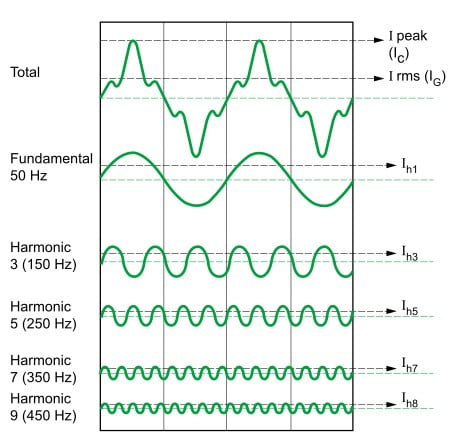Power quality is a subject which goes hand in hand with energy efficiency. Most of the energy efficient strategies we implement utilise infrastructure which introduce non-linear loads to our network. These non-linear loads contribute to a major issue affecting our national grid, that of harmonics, which is the reason these two subjects are interrelated.
The implementation of power quality improvement strategies will lower carbon emissions, increase energy efficiency, eliminate waste with regards to energy consumption, optimise power quality and the kicker – significantly reduce energy costs.
If you discovered your family car was leaking fuel, would you find a cheaper source of fuel or fix the problem?
By fixing the problem at the source you save money on operational costs but also significantly reduce the impact on the environment. The same goes with your energy consumption which is why Enginuity Power Solutions believes our pathway to net zero is by fixing the problem at the source.
Power quality refers to the ability of electrical equipment to consume the energy being supplied to it. Unfortunately, it is one of the most overlooked aspects of running an electrical installation due to a lack of understanding of it. This often leads facility managers experiencing problems within their installations to focus on the symptoms rather than the underlying cause of problems. This can result in further consequences including higher energy usage and costs, higher maintenance costs, as well as equipment instability and failure.
When a linear electrical load is connected to the supply it draws a sinusoidal current at the same frequency as the voltage, however, non-linear loads draw currents that are not necessarily sinusoidal.

The current waveform can become quite complex, depending on the type of load and its interaction with other components in the installation. These non-linear loads increase current, and in severe cases voltage, distortion in the electrical supply, which can lead to significant energy losses, shortened equipment lifespans, and reduced efficiency of devices.
Harmonic currents also have negative effects on almost all items on the electrical system by upsetting sensitive electronic devices and causing dielectric and mechanical stresses. The most significant of these include computer and IT equipment crashes, flickering lights, electronic failures in control equipment, power factor correction equipment failure (capacitors), neutral conductor overheating & unexpected circuit breaker operation.
In recent times there has been a significant increase in the number of non-linear loads connected to the electrical network, including computers and associated IT equipment, uninterruptable power supplies, variable speed motor drives and LED lighting to name a few. It is estimated that today over 95% of the harmonic interference within an installation is generated by equipment within that installation.
Enginuity Power Solutions have proven strategies and numerous case studies where our clients have reduced operation costs and realised significant CO2-e reductions with impressive payback periods. When designing projects for our clients we provide reports which, through thorough data capture and analysis, contain energy saving, CO2-e reductions and return on investment timeframes.
Contact us to discuss how we can support you in the determination of areas of improvement.